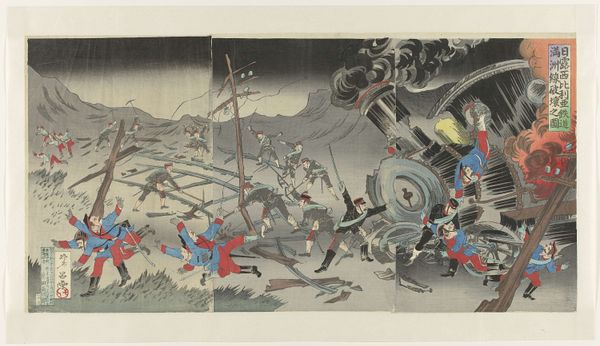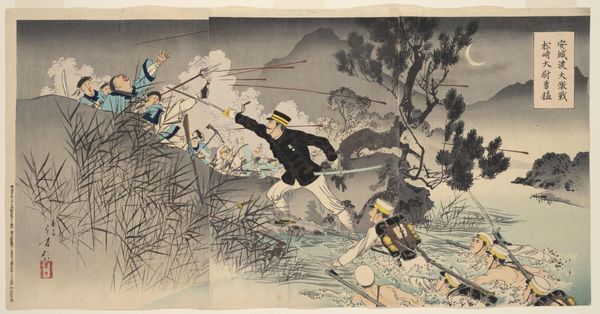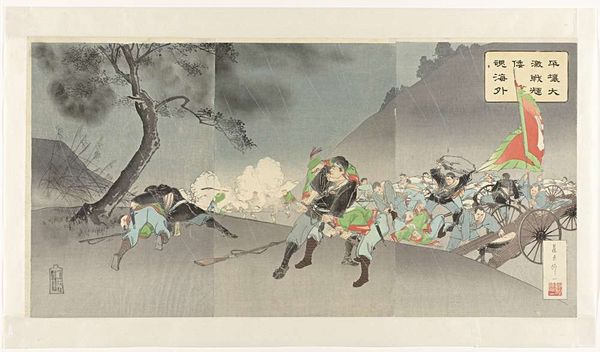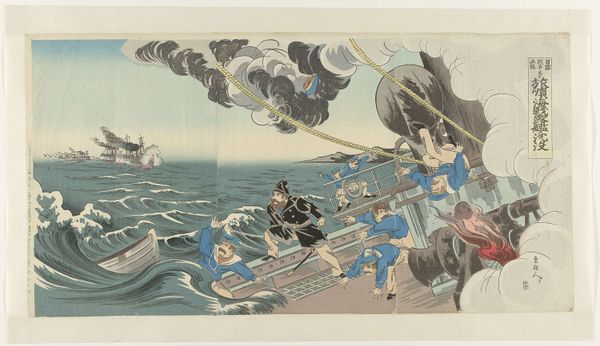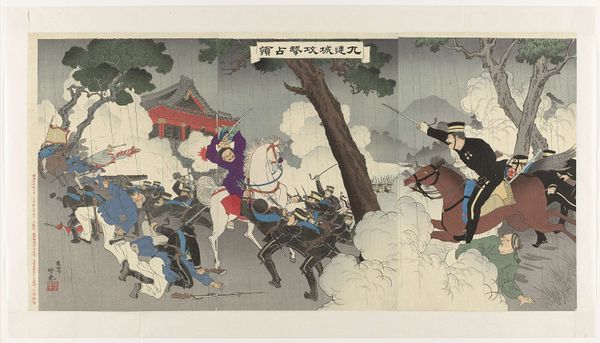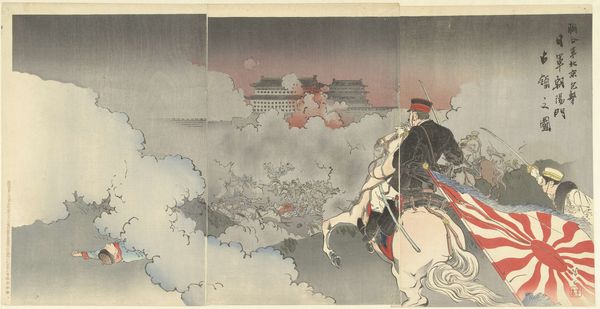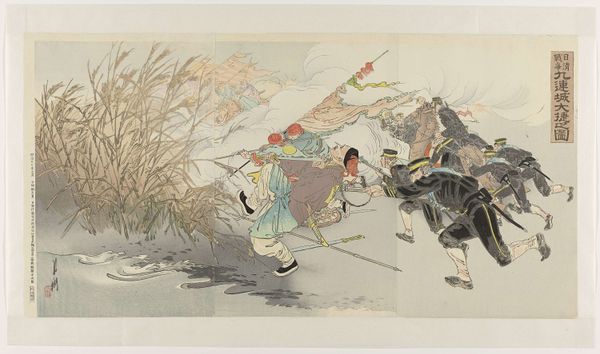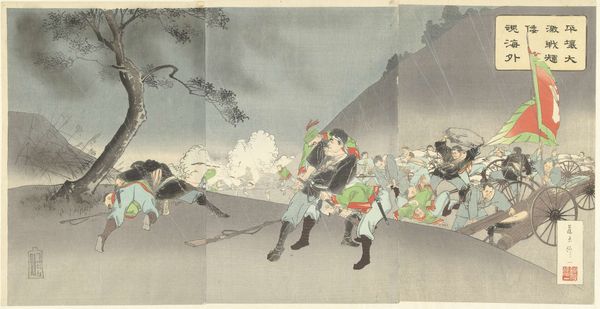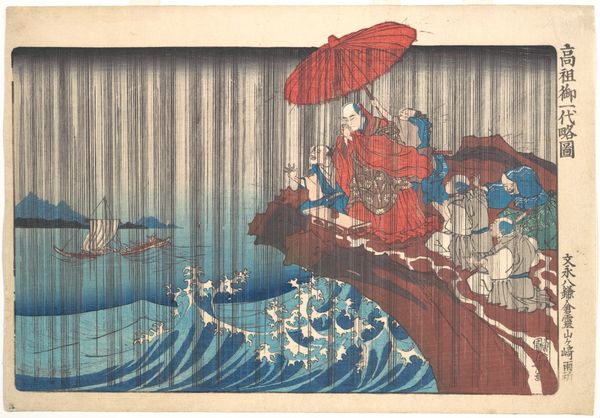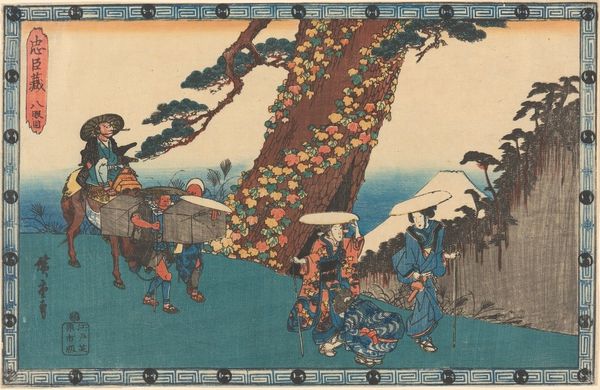
Dimensions: height 368 mm, width 727 mm
Copyright: Rijks Museum: Open Domain
Curator: What a striking piece! The artist Migita Toshihide created this print, titled "Gevecht aan de oever van de Aihe rivier bij Jiuliancheng", around 1894. It's part of the Rijksmuseum's collection, showcasing a battle scene. Editor: It certainly grabs your attention. The frantic energy conveyed by the horses wading through the water contrasts starkly with the chaos unfolding near the wall. The dynamism is captivating. Curator: It's fascinating how ukiyo-e, traditionally known for serene landscapes and portraits, was adapted to depict such intense conflict. The printmaking process itself—the carving of woodblocks, the layering of colors—suggests a deliberate construction of narrative, wouldn't you agree? Editor: Absolutely. And considering the social context, these prints were instrumental in shaping public perception of the Sino-Japanese War. This particular print elevates Japanese militarism by depicting their offensive strategies through dynamic movement against a contrasting backdrop of confusion on the Chinese side of the riverbank, Curator: The lines radiating outward might represent bullets or artillery fire. We see the figures engaged in close combat, but their individual struggles seem somewhat obscured. How does this treatment of the material relate to labor? Were these produced en masse? Did the market demand quantity over refinement? Editor: Exactly. These prints, distributed widely through newspapers and periodicals, were not passive reflections of the war. They played a crucial role in rallying support, normalizing violence, and solidifying national identity, constructing a very particular heroic narrative for the populace. Museums and galleries were already establishing these depictions of war. Curator: It's important to also consider the medium—the woodblock print. Relatively accessible, it served as a potent tool for disseminating a very specific message, manufactured in what would be for that era, large quantities for high levels of public consumptions. Editor: This reminds us that what we see in museums and galleries is often the result of careful curation and historical shaping. How war is represented visually directly influences how we understand that war and its legacy today. Curator: This work opens up so much reflection. It is a reminder to look past what’s being shown to examine the machinery that supports production of what we can consume. Editor: And for me, to recognize how images of conflict and power—like those vividly captured in Migita's work—continue to mold our collective understanding of history and ourselves.
Comments
No comments
Be the first to comment and join the conversation on the ultimate creative platform.

